Being in good health is a natural wish of each human being. When things go not exactly according to the plan, we seek help from professionals. Many do that reluctantly, as traditional white hospital walls and corridors void of any distinctions are not the most pleasant environment. Yet the contemporary reality of health care centers is no longer intimidating: hospitals and other medical facilities get new looks thus helping the patients and doctors improve their experiences.
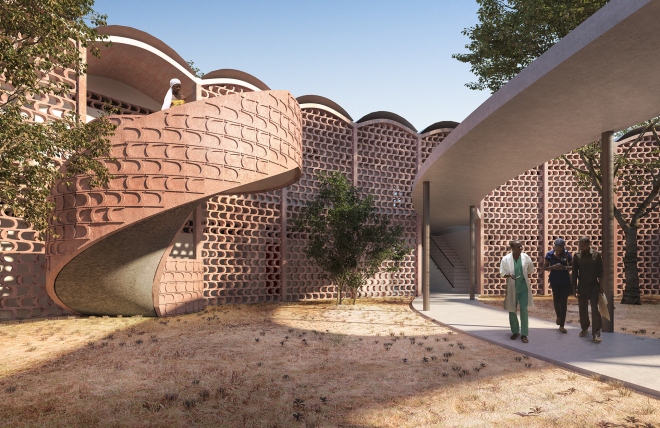
Manuel Herz Architects, Basel, have designed the maternity and pediatric clinic for Tambacounda Hospital in eastern Senegal.
This only facility serves the local population of 100,000 citizens of the hottest metropolis on the planet, as well as more than a million people from the surrounding regions and the neighboring Mali.
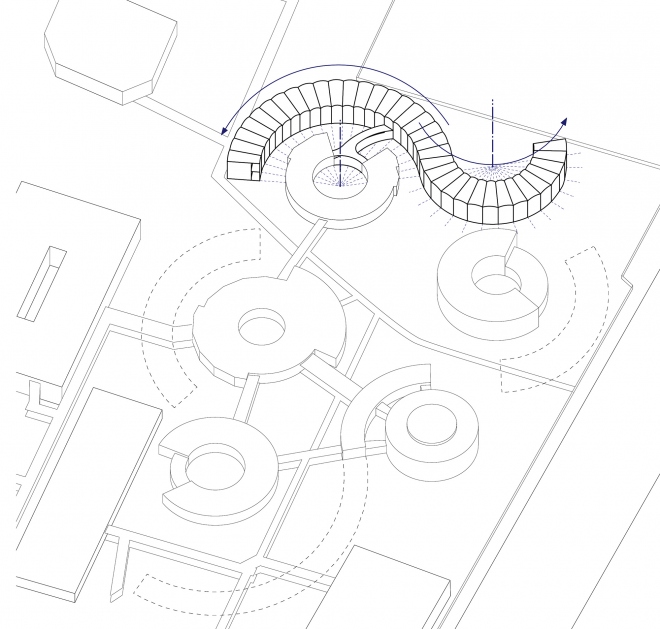
Maternity and pediatric clinic for Tambacounda Hospital by Manuel Herz Architects
The new block of a two-storey, curvilinear building combines two clinics – pediatrics and maternity. The snake-like shape of the structure allows to preserve almost all of the trees that would otherwise have hampered the construction, thus creating a shady courtyard.
The extension will house a number of new treatment rooms on the area of 3,000 square-meters.
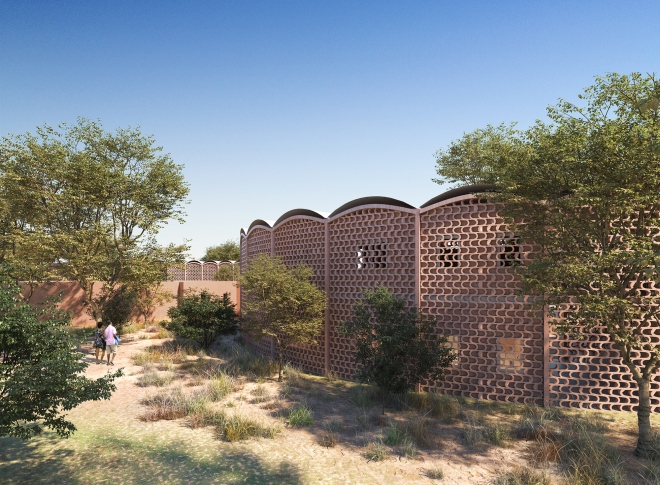
Maternity and pediatric clinic for Tambacounda Hospital by Manuel Herz Architects
Perforated bricks of the clinic’s facade will allow cooling air to filter through to the building’s interior. The windows are inspired by the mashrabiya windows fronted by latticed screens common for Arab countries.
Miralles Tagliabue EMBT, Barcelona, have completed a Maggie’s Centre for cancer care in Barcelona.
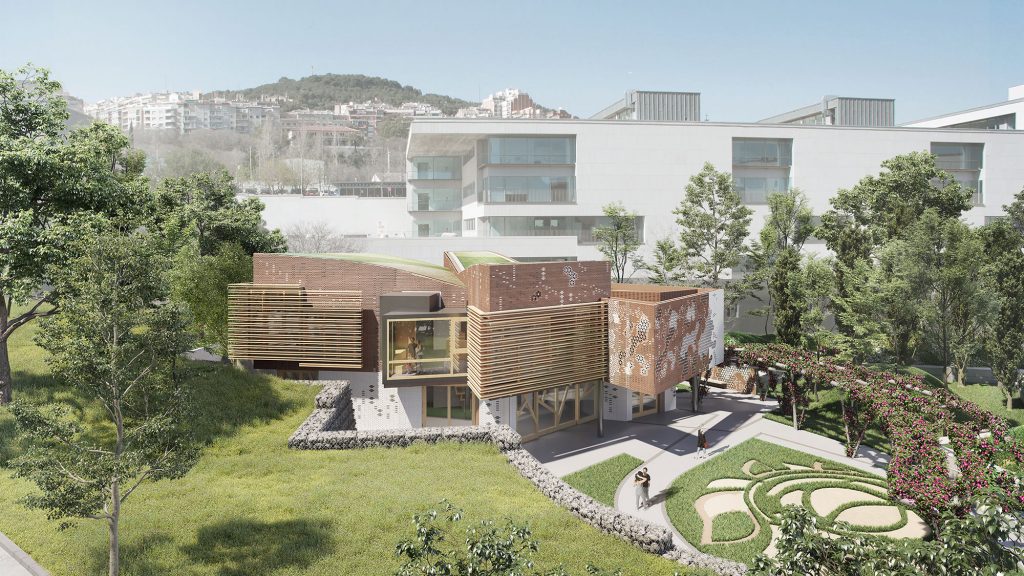
The Kálida Sant Pau Centre by Miralles Tagliabue EMBT
The Kálida Sant Pau Centre, with its red-brick facades adorned with honeycomb-shaped ceramic tiles, is located in the grounds of the Sant Pau Hospital, a UNESCO World Heritage Site in Spain and inspired by the richness of materials, textures, colors, geometries of the hospital complex.
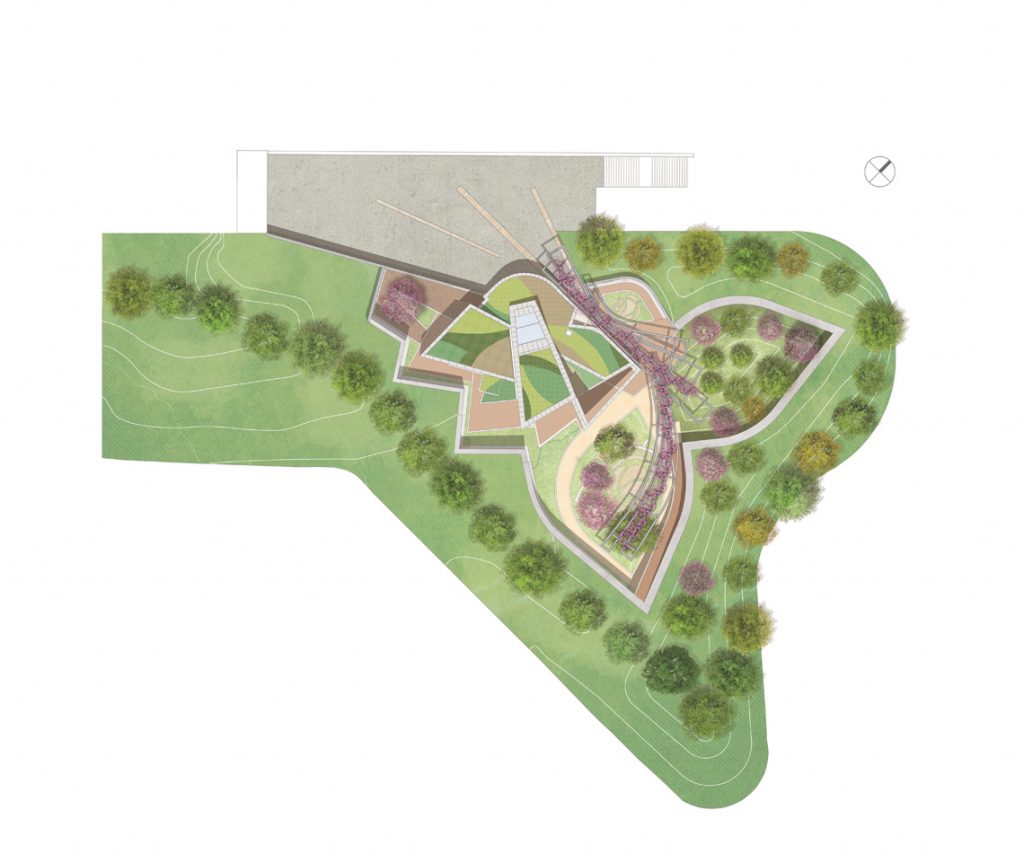
The Kálida Sant Pau Centre by Miralles Tagliabue EMBT
The Centre houses flexible communal spaces with a spacious, double-height dining area that sits at its center, as well as counselling and meeting rooms, and is enveloped by a garden lined with patios offering escape from the medial environment.
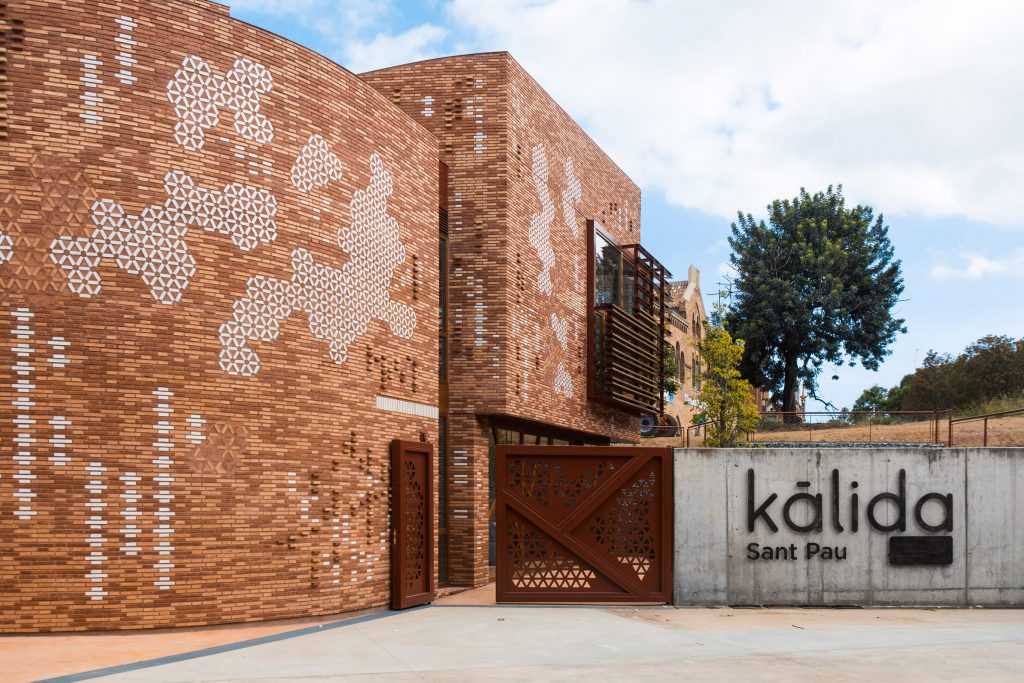
The Kálida Sant Pau Centre by Miralles Tagliabue EMBT
LEO A DALY with offices in North America and Middle East is working on a concept of a drone-powered hospital that would use autonomous aerial vehicles to deliver food and medical supplies directly to patients. The inspiration for the project came from the devastating results of Hurricane Maria that hit Puerto Rico leaving hospitals cut-off and patients without the necessary help.
The hospitals of the proposed type should be built in hurricane-prone areas, thus ensuring continuous operation even when roads are destroyed or closed.
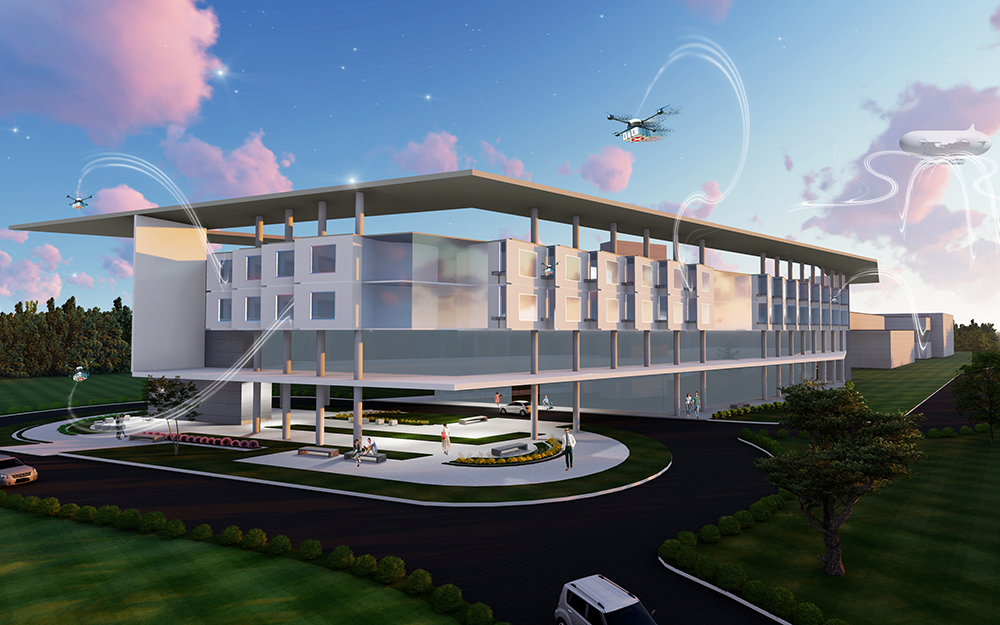
A drone-powered hospital by LEO A DALY
The idea is that the drone ports are located on the outside wall of each patient’s room – this ensures that patients can receive supplies directly from the port or anywhere else with drone infrastructure. Drones will be dropping their loads into a net, from where they slide through a valve and into a cabinet inside the patient’s room. And these rooms will sit in slight angles, thus creating gaps in exterior façade allowing the drones to dock in.
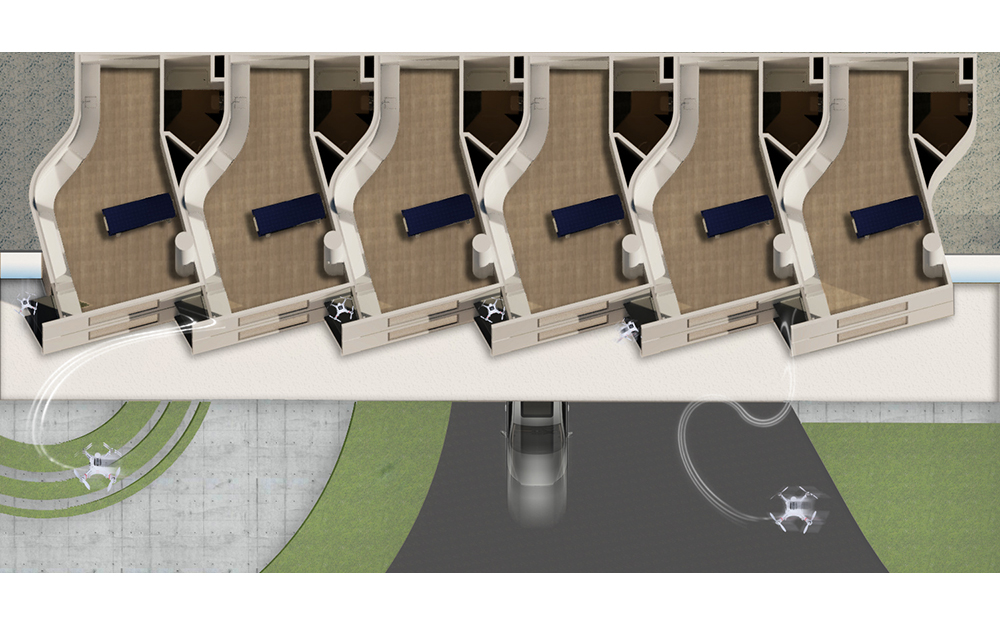
A drone-powered hospital by LEO A DALY
The structure is designed to withstand strong winds and seismic activity, will have photovoltaic panels for solar power, and rainwater collection and treatment facilities.
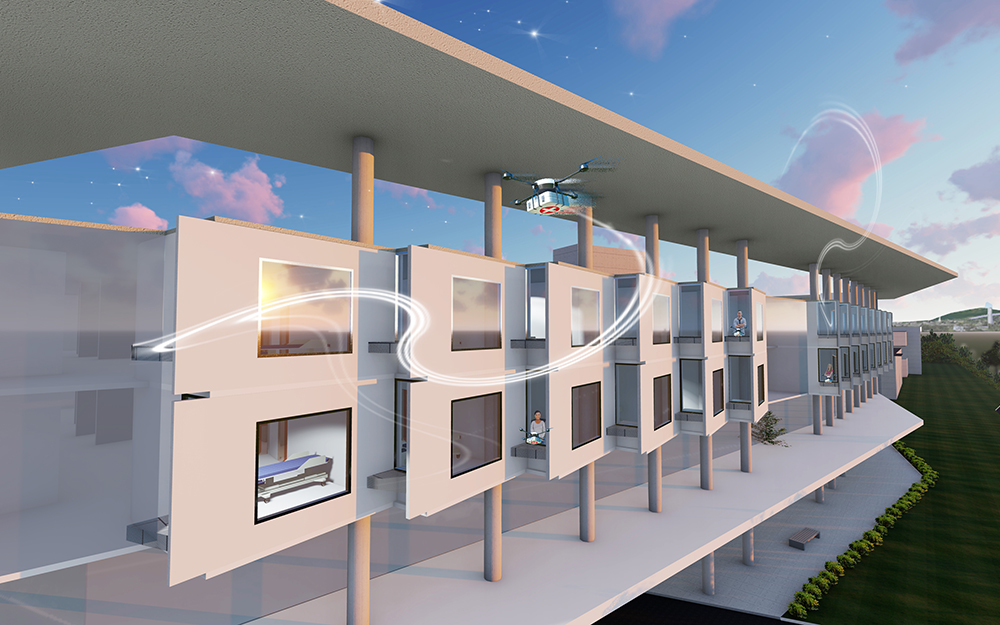
A drone-powered hospital by LEO A DALY
The architect suggests taking storage, food production and pharmacy facilities off-site, as smaller buildings could more easily fit into the communities that need them.